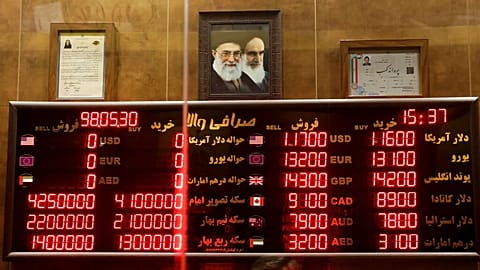The proportion of workers earning just the minimum wage is higher than 10% in a number of countries across Europe. Euronews Business takes a closer look at the data.
This year marks a significant step towards improving working and living conditions in the EU member states because the EU's new minimum wages directive has to come into law by 15 November of this year.
No minimum wage in 5 EU countries
Twenty-two of the 27 EU member states have a national minimum wage. Denmark, Italy, Austria, Finland and Sweden do not. Cyprus introduced one early last year.
Among 10 candidate and potential candidate countries, eight have a national minimum wage. Montenegro, Moldova, North Macedonia, Georgia, Albania, Serbia, Turkey and Ukraine all have one, while Bosnia and Herzegovina, and Kosovo do not.
The European Free Trade Association (EFTA) countries of Norway, Switzerland and Iceland do not have a national minimum wage.
Where the gross minimum wage is below €1,000
Minimum wages for EU countries vary widely, with gross monthly minimum wages currently ranging from €477 in Bulgaria to €2,571 per month in Luxembourg.
The minimum wage is more than €2,000 in Luxembourg, Ireland, the Netherlands and Germany while the figure for France is €1,767 and €1,323 for Spain.
The minimum wage is below €1,000 in 14 out of the 22 member states where there is a national minimum wage.
The figure ranges from €360 in North Macedonia to €613 in Turkey among the candidate and potential candidate countries.
Bulgaria (€477) has a lower minimum wage than Turkey, Serbia and Montenegro, all of which are candidate countries.
Variations are smaller in PPS
Variations in minimum wages are considerably smaller in purchasing power standard (PPS), which provides a fairer comparison.
PPS is a Eurostat-defined "artificial currency unit" based on price level differences between countries. One unit of PPS can theoretically buy the same amount of goods and services in each country.
The minimum wage, adjusted for PPS, currently ranges from €542 in Albania to €1,883 in Germany.
Besides Germany, this figure was above €1,250 in Luxembourg, the Netherlands, Belgium, France, Ireland, Poland, Slovenia and Spain.
Czechia, Slovakia, Estonia, Latvia and Bulgaria recorded the lowest minimum wage in PSS among the EU countries with a minimum wage in PPS of below €1,000.
Some candidate countries such as Turkey, Serbia and Montenegro had higher wage levels than EU countries such as Estonia, Latvia and Bulgaria but the figure was still below €1,000 for all candidate and potential candidate countries, for which data are available.
Proportion of minimum wage earners
The proportion of employees earning the minimum wage varies significantly. Minimum wage is crucial in some countries where there are more people at the lower end of the earnings scale than in other countries. The data is based on 2018 figures which was the last year for which earnings data are available.
So, in 2018, the proportion of employees being paid less than 105% of the national minimum wage was above 10% in five EU countries. They were: Slovenia (15.2%), Bulgaria (14.1%), Romania (13.3%), Poland (12.1 %), and France (11.6 %).
This proportion was also above 5% in 10 EU members including Germany (6.6%).
How to decide an adequate minimum wage?
It is not easy to define an adequate minimum wage. The EU's directive includes this statement:
"To that end, member states may use indicative reference values commonly used at international level such as 60% of the gross median wage and 50% of the gross average wage, and/or indicative reference values used at national level."
Figures for 2022 show that many European countries had lower ratios than this level.
Ratio of minimum wage to median wages
Ratio of minimum wage to median wage is another useful indicator indicating the status of minimum wage earners.
In 2022, minimum wages represented less than 50% of the median wages in 10 EU countries according to the Organisation for Economic Co-operation and Development (OECD). They included Spain, Hungary, Ireland, Croatia, Lithuania, the Netherlands, Czechia, Estonia, Belgium and Latvia.
This ratio was over 60% in only three member states: Portugal (66.3%), Slovenia (61.7%) and France ( 60.9 %). Turkey, a candidate country, had a ratio of 65.2% in this indicator.
"These ratios can be misleading when they are interpreted too literally," the International Labour Organisation (ILO) warns as minimum wages are relatively high in some countries, France, for example.
Important to adjust minimum wages regularly
Real minimum wages fell in most EU member states when inflation reached its highest levels in 2022. The OECD calls for regular revisions to protect the standard of living of low-paid workers.
"It is important that statutory minimum wages adjust regularly," the OECD "Minimum Wages in Times of Rising Inflation" report said.
The EU's directive aims to set a framework for:
- adequacy of statutory minimum wages
- promoting collective bargaining on wage-setting;
- enhancing the effective access of workers to their rights to minimum wage protection.


















